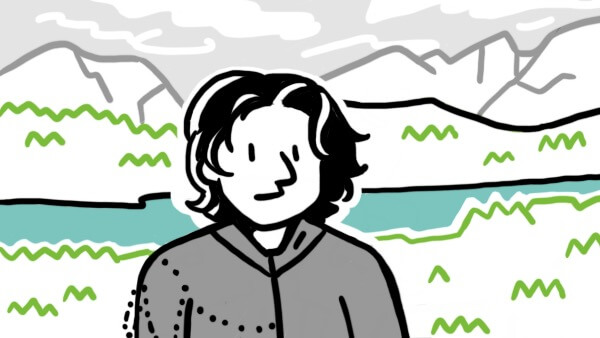The critics need you to know that Dune is big. Jackson Piercy calls it “massive in pure scale and in box office revenue” and Manohla Dargis calls it a “work on a large scale” and extols the “monumentality of [Director Denis] Villeneuve’s world building.” It’s a film that tackles colossal issues, colossally—interplanetary politics, economics, war, religion—and strikingly personal concepts, intimately.
It’s no revelation that audiences love spectacle, but it is somewhat fascinating that a movie that’s 156 minutes long and deals with a heady, deeply thoughtful narrative has made the returns it has (as of this writing, $299.3 million against a budget of $165 million). “Big” alone doesn’t account for that amount of critical and audience adoration. So how is Dune pulling it off?
“The movie leans on a lot of exposition, partly to help guide viewers through the story’s denser thickets, but Villeneuve also uses his visuals to advance and clarify the narrative,” writes Dargis, and she couldn’t be more correct. Sure, there’s a lot of talking in Dune—but it’s the relationship between that dialogue and the visual storytelling that makes it work.
Take Caladan, the homeworld of the honorable House Atreides. Our protagonist, Paul (Timothee Chalamet), grew up there with his royal parents, the mysterious and magical Lady Jessica (Rebecca Ferguson) and the weary but goodhearted Duke Leto (Oscar Isaac). It is a windswept, grassy, rain-soaked land of peace. Shot in Norway, Caladan is safe, familiar, gorgeous—and more than a backdrop, it’s part of the Atreides family.
Talks between Paul and Leto sound different on Caladan than they do on Dune. The most important element on Dune—water—is simply everywhere on Caladan. Unchanging and lush, Caladan is home. But, to paraphrase the title of Thomas Wolfe’s 1940 novel, you simply can’t go home again.
Once the film moves to Dune, filmed in the Liwa Oasis in the United Arab Emirates, the visuals shift entirely. In terms of design principles, the accent color of Caladan is dark blue; Dune’s is unquestionably tan. Whether it be reflected in the endless sands, the clothing of the mysterious native Fremen, or the pockmarked stone of its cities, the color scheme of Dune signifies erosion, evasion, and unvarnished survivalism.
Dune’s visual storytelling goes beyond a pair of settings with contrasting color palettes, of course. Its message, always the core of strong communications and art, is delivered through Villeneuve’s visual storytelling by linking the smaller, interpersonal narratives of the characters to the perfectly crafted visuals in his frames.
When Paul is dangerously tested by the head of his mother’s order (a horribly painful test, with death as the consequence of failure), his racing, terrified mind is terrifically visualized through Chalamet’s performance. All of us are wired to fixate on human forms, and faces in particular, and Chalamet’s silent facial shifts each register like explosions. We can see him ricochet from furious to mortified, agonized to resolute, and back again, all courtesy of tight framing on the face of a phenomenal performer.
Villeneuve does this throughout the film, using tight closeups of his actors for plunging and intimate looks into their emotions, and then swinging us back to huge landscapes of sand (or sea, if we’re still on Caladan). The director’s visual storytelling is meticulous enough for him to have his cake and eat it too—delivery of message through both massively-scaled environments and battles and through tight, human moments.
Of course, no discussion of Dune’s visuals can ignore the least human of its elements: the sandworms. For the uninitiated, imagine worms that can be over a mile long, with a colossal mouth ringed with razor sharp teeth. With lifecycles inextricably tied to the spice—the most valuable commodity in the universe, and reason for Dune’s continuous colonization—the worms are terrifying and spellbinding in equal measure.
What does this mean for Villeneuve’s visual storytelling? Essentially, they’re another level of landscape-as-character, albeit the breathing version. They’re a moving metaphor for the planet itself: harsh, unforgiving, yet removed from human affairs enough to be effectively neutral. Needless to say, there is no equivalent to the worms on Caladan, or anywhere else.
The worms are finally another elegant messaging tool, reinforcing the duality of scale and framing within the film. They are, in a way, the opposite of Paul—enormous, simple, impersonal, and threatening. Paul’s burgeoning power comes from within, and is unclear even to him; the worms’ power is external—physical—and as obvious as the blazing sun to all who see them.
The worms are also exactly like Paul—feared, hated, worshipped, and respected—and inseparable from the destiny of Dune and House Atreides, whether or not they want to be. Villeneuve’s message with these two pillars of his film is perspective: all of us mean many different things to ourselves, and to others, at and we often can’t control these complexities.
Story is our human coding language, our way of transmitting our meaning and message in effective, personable notes. Dune is a story that seems to encompass everything, with parallels to world history, classic literature, faith traditions, family dynamics, addiction, and much, much more. It’s difficult, if not downright unreasonable, to pick the ‘one’ thing that Villeneuve’s story is truly about.
Luckily, Villeneuve respects his audience profoundly, and trusts them to follow his intersecting narratives. This is because, at the end of the picture, there is an element that can be boiled down: his message.
Dune is about change. It’s about the meeting of agony and resolve at the foundational moments of our lives. It’s about the velocity, and intensity, of feeling that matches those moments. It’s even about whether or not change is an option, and if we’re willing to commit to it when it is.
Dune’s message is in its title. Shifting sands. Some things are buried beneath them, some flow with them, some stride atop them, and some fall through them. We find out who we are when we step onto the sand.

